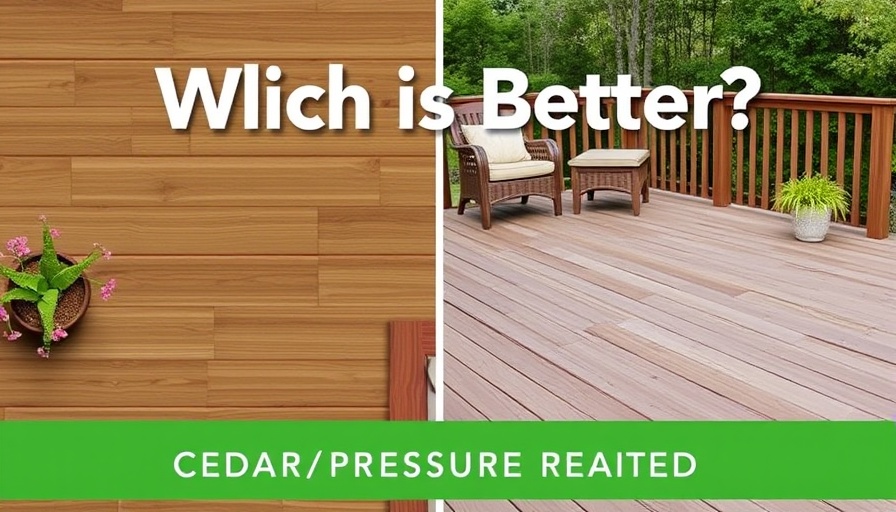
Understanding the Decking Dilemma: What’s at Stake?
Choosing the right decking material is critical; it influences not just the aesthetics of your outdoor space, but also the health of the environment. Homeowners in London face a choice among various materials: cedar, pressure-treated wood, and composite plastic. Each option comes with distinct advantages and disadvantages that warrant thorough consideration.
The Allure of Cedar Decking
Cedar boasts natural beauty and a rich aroma, making it a classic choice for decks. Its natural oils make it resistant to decay and insect damage, allowing cedar decks to endure for many years. However, cedar requires regular maintenance, such as staining and sealing to preserve its character and integrity. If not maintained correctly, it may lose its luster and succumb to weathering.
Cost Analysis: Cedar vs. Pressure-Treated vs. Composite
Cost is often a deciding factor in decking choices. Cedar may have higher upfront costs compared to pressure-treated options but is favored for its longevity and aesthetic appeal. Meanwhile, pressure-treated wood is more affordable initially, but its treatment chemicals may raise concerns regarding leaching into the soil over time. Composite decking, while initially expensive, requires little maintenance and promises a long lifespan, reducing long-term costs. When evaluating your budget, consider not only the sticker price of materials but also the lifecycle cost, including maintenance and replacement.
Durability and Environmental Impact
Durability varies significantly among the three materials. Cedar decks may last up to 30 years with proper maintenance, whereas pressure-treated wood can last between 15-25 years. Composite decking manufacturers often claim lifespans upwards of 30-50 years due to its resistance to fading, warping, and impact. An environmental perspective is essential, as composite alternatives are typically made from recycled materials, offering an eco-friendly solution. However, even with wooden options, sourcing from sustainable forests can reduce your decking's carbon footprint.
Maintenance: A Necessary Evil or Worthwhile Commitment?
Maintenance needs vary widely. Cedar requires annual care to maintain its beauty, while pressure-treated wood, albeit less demanding, may require staining every few years. Composite decking excels here as it requires little attention beyond occasional cleaning, presenting an attractive choice for busy homeowners. Understanding your willingness to engage in these commitments is crucial when selecting a decking option.
Potential Risks and Challenges
Every material comes with its challenges. Cedar is susceptible to warping and splitting if not treated correctly, while pressure-treated wood can release toxic chemicals, raising concerns around safety and environmental impact. Composite materials face criticism for not being fully recyclable, leading to landfill issues. Homeowners must weigh these risks against their values and desired aesthetics when making a decision.
Making Informed Decisions: What You Can Do
Equipped with knowledge, homeowners can make informed decisions that reflect their aesthetic preferences, budgetary constraints, and environmental responsibilities. Researching local suppliers who offer sustainable options and seeking advice from home service experts in London can also provide unique insights tailored to your specific situation.
Inspiring Sustainable Choices In Your Home
As we move toward a more eco-conscious society, the materials we use in our homes signal our priorities. Choosing sustainable decking not only enhances your living space but also contributes positively to the environment. Consider how each option aligns with your personal values and the community’s ongoing efforts toward sustainability.
For homeowners in London pondering their decking options, the journey doesn’t stop here. Engaging with experts and tapping into community resources can provide you with actionable insights to elevate your outdoor space sustainably.
 Add Row
Add Row  Add
Add 




Write A Comment